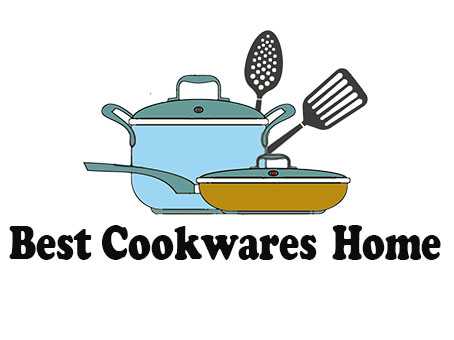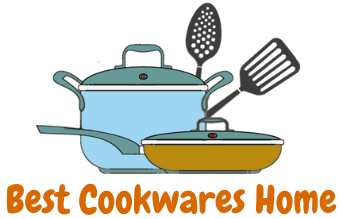
Your cast iron skillet makes the perfect pancake cooker. It’s deeper than a pan, so it’s easy to flip your pancakes without worrying about spilling precious batter over the sides. The sloping sides of the cast iron give you enough room to pour in the batter for multiple pancakes, or to fill in holes if you don’t have many in the skillet due to flipping mishaps.
One of the greatest benefits to cooking with a cast iron skillet is the ability to achieve maximum heat retention, making it one of the best cookware choices for achieving golden brown pancakes. Sometimes it takes effort to clean the burnt outside of skillet, but do not worry if you follow the right method of cleaning then it’s not an issue.
Luckily, a cast iron skillet is a foolproof way to make pancakes. It evenly distributes heat for perfect pancakes every time. Some people love to cook pancakes in the electric skillet as well but cast iron griddle is the popular one.
So don’t be intimidated by the thought of cooking pancakes in a cast iron skillet, and get ready to impress your family and friends with your homemade breakfast treats.
In this article, I’m going to show you how to use a cast-iron skillet to make the most delicious pancakes, plus share some tips for food safety, doneness, and cleanup.
Summary
How to Cook Pancakes In a Cast Iron Skillet?
Cooking pancakes on cast iron may take a little getting used to, but it’s actually very simple. Once you’ve mastered perfect pancakes on a cast iron skillet, there will be no regrets. Your only regrets will be that you didn’t start cooking your pancakes on a cast iron skillet sooner.
Step 1: Put a healthy amount of oil in the skillet, and turn on the burner. You want your pan to be blazing hot before cooking begins.
Step 2: Pour batter into the center of the pan. Once you’ve poured enough batter, begin spreading it lightly with a spatula until it covers about half an inch from the sides of the pan.
Step 3: Only cook your pancake until you see bubbles forming on top. If you wait for these bubbles to pop, the pancakes will be sturdy enough to flip without turning inside out and spilling batter everywhere.
Step 4: With a firm grip, put your spatula underneath one side of the pancake and flip. Be careful to get a firm grip, as the batter is very thin and will want to break apart.
Step 5: Cook your pancakes on the opposite side for about half a minute or until golden brown.
Step 6: Remove from heat and place onto a plate covered with a paper towel to soak up the excess oil.
Step 7: Slather with butter, maple syrup, or both if you prefer.
Food Safety
High heat is the key to cooking your pancakes on cast iron safely while achieving that perfect golden brown color. When dealing with high temperatures, you need to be cautious of food poisoning due to bacteria growth. Here are some tips to ensure your pancakes stay safe and delicious.
- Make sure you cook your food at the right temperature for the minimum amount of time required. This is important for not only dangerous reasons but so that food tastes its best.
- Keep raw meat and fish separate from other foods until they’re cooked thoroughly and well done. Any bacteria from the raw meat could contaminate other food and cause illness for those eating it.
- When cooking at high temperatures, avoid overcrowding your pan and cook in batches if necessary until you achieve that golden brown color.
- Once everything is cooked thoroughly, remove the pancakes to a plate covered with a paper towel to soak up any excess oil and grease.
Cooking Tips and Tricks
If you’re new to cooking with a cast iron skillet, here are some helpful tips and tricks to ensure your pancakes come out great.
- Make sure your pan is hot before adding batter. This cuts down on the time needed for cooking as well as giving the pancakes that golden brown color.
- Use a good bit of oil in your pan to avoid sticking and give those pancakes that golden crust we all love.
- Don’t grease the pan until it has been heated for at least three minutes before you pour the batter into it or else your pancakes will stick. You can skip this step if you like, but you won’t get that crispy golden crust.
- Spread your batter quickly and carefully once you pour it into the pan to avoid spillage, but don’t rush yourself or you could end up with a pancake that doesn’t cook evenly.
- Use a spatula to check if the edges of your pancakes are browning before flipping the pancake. If they are, flip it.
- When you remove your pancakes from the heat source, place them on a plate covered with a paper towel to soak up any excess oil and grease. This will not only preserve your food’s crispiness but also cut down on excess fat for those watching their figures.
- Use your cast-iron skillet for more than just pancakes! You can make all kinds of foods there, from pizza to seafood. Just remember not to use metal utensils when cooking with it. If you need a replacement pan or are looking for a new one, visit familyhandyman.com/cast-iron-skillet-reviews for reviews of the best cast iron skillets available to purchase.
How Do You Keep Pancakes From Sticking To Cast Iron Skillet?
You need to be careful in your pancake preparation the skillet should have been preheated, you should have just enough oil or butter to keep it from sticking, and you should distribute the batter quickly and carefully. You never want an empty spot where there’s no batter because that hot oil will hit metal and stick.
Pancakes sticking to the pan can be avoided by using just enough oil or butter before cooking. After preheating the skillet, swirl the pan so the oil coats every surface. You don’t want an excess of oil or your pancakes will have a greasy taste and be difficult to remove from the pan. Once pancakes are placed in a hot skillet, do not move them until they have formed a crust on the bottom.
Read more: how to clean crud off a cast iron skillet
Frequently Asked Questions
Are cast iron pans good for pancakes?
A cast iron skillet makes excellent pancakes. The black surface of the pan absorbs heat evenly to cook food quickly and gives it a wonderful seared taste. It should be seasoned before first use, but after that, it will provide years of pancake-making goodness!
What is the best pan for cooking pancakes?
The best pan for making pancakes is a cast iron pan. A cast iron skillet has excellent heat retention so it cooks pancakes evenly on the bottom and gives them lovely golden-brown color. Cast iron pans are durable, can be used on almost all cooking surfaces, and last forever with proper care!
What size of cast iron skillet is best for pancakes?
A 12-inch skillet is a good size for pancakes, but a 10-inch one will do if that’s what you have. A larger pan means fewer pancakes and they won’t be as thick, which some people prefer. If your cast iron skillet is too small to hold all the batter at once, make them in batches of two or three at a time.
How do I prevent pancakes from sticking to pan?
Preheat the skillet, use just enough oil to keep the pancakes from sticking, and distribute the batter quickly and carefully. If you need to flip them, wait until they form a crust on the bottom so they don’t crumble or stay together as well as when you first put them in the skillet. If you wait until they set, they should be easier to flip and will hold together better when cooking on the other side.
Why do pancakes stick to cast iron?
Pancakes can stick when they are overcooked or too greasy. Make sure that the skillet is well seasoned and preheated, then swirl around enough oil or butter before cooking. For thicker pancakes, wait until there’s a crust on the bottom before flipping for best results.
What should not be cooked in a cast iron skillet?
Don’t cook acidic foods in a cast iron skillet as it can damage the seasoning and release toxins from the metal. Broccoli, for example, which has a high acid content, should never be cooked in a cast iron pan.
Final Words
As you can see, pancakes don’t have to be a huge, time-consuming project. It’s actually very easy to make a delicious batch of fluffy pancakes using a cast iron skillet. If you want to try something different this weekend and surprise your family with a new take on an old favorite, then grab that cast iron skillet out from under your bed and get cooking.
We hope you enjoyed our article about how to make the best pancakes ever with your cast iron skillet. If there are any additional tips or information you’d like us to include, let us know in the comments section of this article. We love hearing from our readers.
Read More
Best Nonstick Square Griddle Pan
Can you cook scrambled eggs on a griddle
Pros And Cons Of Cast Iron Cookware

Hi, Welcome to our Blog. We are a team of Professional Blogger and expert in Cookware, Kitchen Appliances. We Work for the latest Reviews for Cookware, Kitchen Appliances. You can give us your kind Suggestions for improvements of Blogs, Thank You
